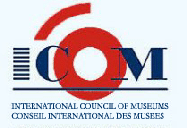 |
|
|||
|
REISERAPPORT
Living Intangible Heritage A key to the understanding of the Korean interest in living intangible heritage is the 1962 Cultural Properties Protection Law (CPPL), and the papers of all four Korean speakers centred around this. The CPPL was created in the first period of rapid modernisation after the Korean War. Much of Korea's tangible heritage was destroyed and the country's intangible heritage was in obvious danger of disappearing. The Korean War came on top of a Japanese occupation that lasted for almost four decades (1910-1945) and there was a strong need to rebuild Korean national identity and self-respect. Through the CPPL, several hundred cultural practices were identified, given a number, and one person with exceptional skill in each cultural practice was given the responsibility of keeping this alive as part of the heritage. The intangible part, that is the knowledge and skill involved, was seen as crucial. Even critics of the CPPL admit that without this law, a great number of traditions would have disappeared. Nevertheless its effects are much debated today. In his paper Jan-Hyuk Im (Korea) stated that the law should be converted from a protection-oriented policy to a propagation-oriented policy, in order to develop as popular cultural policies rather than cultural properties of the successors only (that is: the single line of individuals appointed as responsible). Jongsung Yang (Korea) pointed out that the practice of designating one person for each identified practice led to the frustration and non-recognition of many good performers who had not succeeded in becoming the chosen holder, with the result that many potentially excellent performers stopped practising at an early stage in their training. Yang was also worried about the exclusion of non-designated intangible heritage, which is now disappearing. Kyung-Mann Cho (Korea) saw a challenge in not just giving information about the past, but creating space for reflection and comparison with life as it is lived in Korea today. Some Korean speakers also criticised the emphasis on conveying a cultural practice as accurately as possible instead of promoting personal styles or adapting the practices to the changing realities of Korean life. I am sure many will recognise debates like these in their own countries, even where there is no such law as the CPPL. What is worth preserving? Should one stress copying or constant change and development? How should one maintain a high number of practitioners, securing a broad basis for the intangible heritage? What indeed does it mean that something is "alive"? In spite of criticism of the rigidity of the CPPL however, there appeared to be some agreement among our Korean colleagues that only traditional heritage should be protected. And although I may be wrong in making this assumption, judging from dialogues with Korean museum curators, the concept of "traditional" does not appear today to be a priority. This was in contrast to many of the other speakers who were more concerned with the preservation of the meaning and practice connected to intangible heritage, with all its present day hybridisations, rather than connecting preservation to the outward forms of a traditional society. Silvia Singer (Mexico) described how present-day living intangible heritage has been collected in Mexico since the 1980s and that restoring the meanings attributed to intangible heritage is an important goal. Ana Maria Labrador (Philippines) compared a presentation of Philippine highland people in the United States in 1904 with the way they represent themselves in 2004; one of her main points was that the highland people of today did not want to be seen as stereotypical "traditional cultures", but as peoples that maintain their intangible heritage as a completely integrated part of the diversity of present-day life, again with more emphasis on the meaning of the cultural practice, rather than its outward form. Annette Fromm (U.S.A.) pointed out that heritage is often claimed to be "disappearing" when the material culture is "modernised" or "Westernised", but that the intangible parts - the meaning and the knowledge - often lived on in new forms that tended to be overlooked by the museums. Henry C. Bredekamp (South Africa) discussed whether one can see the collections inherited from the apartheid period in South Africa as genuine representations of the tangible and intangible heritage of the South African peoples. Leif Pareli (Norway) described how Shamanism among the Sami people of northern Norway was outlawed by the Christian authorities in the 18th, 19th and part of the 20th centuries, but is now taken up again by some individuals as a religious practice as part of the Sami ethnic revival. It is debatable whether the Shamans of to-day represent a continuous tradition, but it is nevertheless an outlet for a religion that was suppressed for centuries and seen as an important part of the Sami intangible heritage of today. Han-Bum Suh (Korea), Kolokesa Mahina (New Zealand) and Daniel Winfree Papuga (Norway) were all concerned with starting to make museums take intangible heritage more seriously. Mahina described new active collection practices of intangible heritage from the living Pacific cultures of the present day. Papuga gave examples from Norway and Croatia in using food traditions in the museums as a way to convey social meanings, traditions, and ideas of authenticity. Finally, Patrick Boylan (U.K.), outgoing president of ICTOP, dealt with the future of museums and intangible heritage and explained how intangible heritage would be included in the ICOM Curricula Guidelines for Museum Professional Development. N.B. A conference on living intangible heritage was held by ICOM Mexico earlier this year. The papers are published in Spanish. Those interested may contact Silvia Singer on singer@banxico.org.mx. ▲ til toppen Tilbake til reiserapporter 2004 |
||||